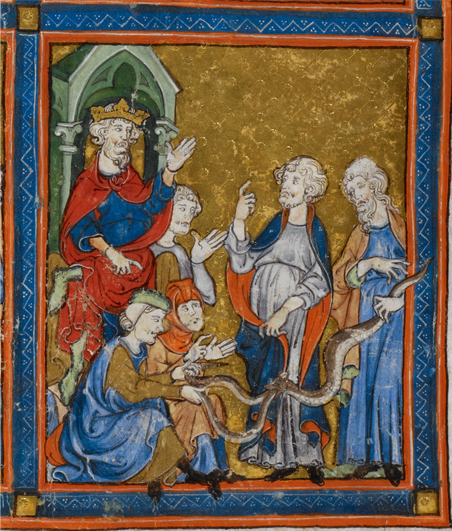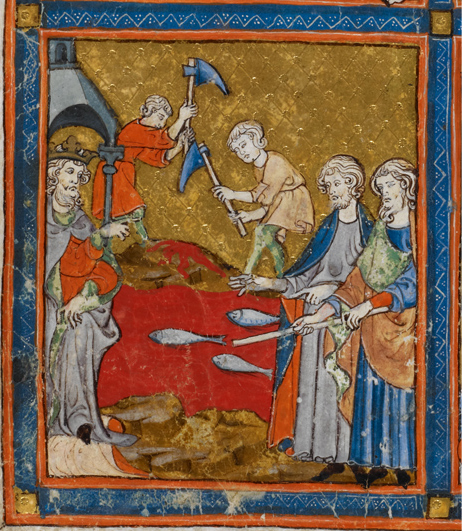Torah Study Date
Saturday, April 22, 2023
Verses Covered
Exodus (Sh’mot) 6:14 – 6:25
Next Session
Saturday, May 13, 2023
Starting at Exodus 6:26
Starting with Exodus 6:14 we noticed a break in the storyline to insert a long genealogy. While at first, this interruption seemed out of place, we realized that this was a good time to establish Moses and Aaron’s lineage and thus affirm their right to address the heads of the clans. At this point in the narrative the Israelites didn’t remember Abraham, Isaac, and Jacob, but they did retain their clan affiliations.
Right away in verse 14 we noticed something “wrong” – namely the fact that Reuben is not the “bechor”. We know that he is technically the firstborn, but in the Joseph story he was “ousted” from that position for his sins and Joseph becomes the “bechor”. The author of this text knows the 12 tribes, but he does not know the Joseph story. These contradictions create dissonance. We as readers don’t need to make excuses for internal inconsistencies, but we should pay attention and hold them in tension.
Some issues we noticed in reading the genealogy:
–What does the phrase “these are the families” mean? What does it signify when the word “toledot” (lineage/generations) is added? We thought “toledot” added importance to that line/clan.
–Why is it important that Saul’s mother is a Canaanite? We should remember that Canaanites and Israelites were separate cultures.
–What is the significance of mentioning age – 137 and 133 years? These are venerable ages and show the importance of the men whose age is stated.
–The line break is wrong in verse 19. “These are the families of the Levites…” should be by itself.
–The Levites were not priests yet at this time.
–Amram marries “up” into an older generation, but Jochebed was probably his age. It is notable that her name is mentioned since women are usually not named in the Torah. Although this type of marriage was later forbidden by the rabbis (Jochebed was his father’s sister, his aunt!) here the marriage is elevated.
–All the generations added up here equal 430 years, which is about the time the Jews were enslaved in Egypt.
–Korakhites will come back later as a distinct group.
–There are lots of later “troublemakers” among the groups named.
After we discussed the genealogy carefully, we reiterated the importance of establishing Aaron’s legitimacy (and since he is Aaron’s brother, Moses’ legitimacy.) These men have an impeccable lineage and have a hereditary right to be leaders. Their genealogy gives them the status to address the leaders of the Israelite clans. We noted that this story is written for male readers, and the reader should consider himself as the hero of the story. (I guess women are supposed to imagine that they are male?)
The Levites have been set up here as a special caste. We noted that this practice continues today in Orthodox synagogues where Cohens and Levys are offered the first aliyot.
We discussed the fact that rabbis were/are NOT Levys and Cohens. The rabbis and the priestly class were totally different. Moses and Aaron were not rabbis. The priestly caste system was passed down through the father; the rabbinic caste system operated through merit and scholarship.
Rabbi Sara explained that originally there were essentially two religions: the Israelite priestly Temple cult (Sadducees) and the rabbinic Jews (Pharisees). The rabbis and the Christians were small fringe religions existing at the same time as the Second Temple. They survived because the Romans ignored them, while they leveled the Temple and massacred the Sadducees. Judaism as we know it did not exist before the 2nd Temple was destroyed. The rabbis reinvented Judaism for “modern” times.
This text does not “know” rabbinic Judaism. Although we can think of the Temple Cult and rabbinic Judaism as two religions, they are not separate today. We can read the text at face value/literally yet at the same time have the rabbis “accompany” us as we read. The rabbis want us to understand the text their way, but we need to remember the values that they have “imposed” on the text. We are free to layer on our own opinions.
One last topic in a very fruitful session: We mentioned that Patiel and Pinchas are Egyptian origin names, which brought us back to the issue of whether the Jews were ever really enslaved in Egypt. Rabbi Sara mentioned the idea that perhaps the Exodus was written as a political allegory, referring to the Babylonian exile.
The artwork this week is from the Golden Haggadah.
Post authors: Laura Ashkin (Text) and Deborah Achtenburg (Artwork)


